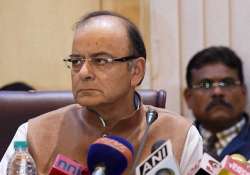Socio-eco census paints a grim picture of rural India
New Delhi: The Socio Economic and Caste Census (SECC) 2011 on Friday painted a grim picture of rural India, indicating that one out of three families living in villages is landless and depends on manual

New Delhi: The Socio Economic and Caste Census (SECC) 2011 on Friday painted a grim picture of rural India, indicating that one out of three families living in villages is landless and depends on manual labour for livelihood.
The SECC 2011, also the first paperless census conducted on hand-held electronic devices by the government, said 23.52 per cent rural families have no literate adult above 25 years, suggesting a poor state of education among rural masses.
The census, carried out in 640 districts under the aegis of the Rural Development Ministry, was released jointly by Finance Minister Arun Jaitley and Rural Development Minister Chaudhary Birendra Singh here.
According to the census, there are a total number of 24.39 crore households in the country, of which 17.91 crore live in villages. Of these, 10.69 crore households are considered as deprived.
The deprivation data reveal that 5.37 crore (29.97 per cent) households in rural areas are “landless deriving a major part of their income from manual labour”. As many as 2.37 crore (13.25 per cent) families in villages live in houses of one room with ‘kaccha' walls and roof.
It further said 21.53 per cent, or 3.86 crore, families living in villages belong to SC/ST categories.
Releasing the census, Jaitley said, “It's after seven-eight decades that we have this document after 1932 of the caste census… It's going to be very important document for all policy makers both at central and state governments…this document will help us target groups for support in terms of policy planning.”
The data, Singh said, “addresses the multi-dimensionality of poverty and provides a unique opportunity for a convergent, evidence based planning with a Gram Panchayat as unit”.
Singh added a caveat, saying though the name of the census suggests caste, it does not include castes.
“The name of the report indicates (caste), but caste is not reflected in our data … still the name is Socio Economic and Caste Census,” he said.